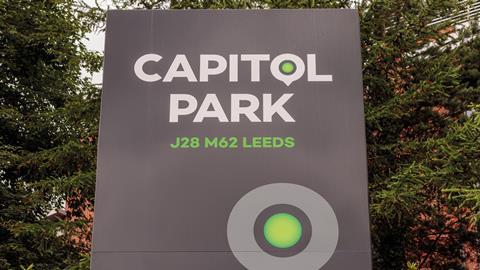In general, cases on break clauses turn on what tenants have left behind, so it is refreshing to see a case discussing what the tenant took away.

As tenants review their needs for office space and the rent they are paying, break clauses in leases will come under scrutiny. Any pre-conditions in a break clause must be strictly complied with in order for the break to be successful. Any error generally means the tenant has to pay rent for another five years or more, so if the space cannot be re-let quickly, potential errors are probably worth litigation.
In Capitol Park Leeds plc v Global Radio Services Ltd [2020] EWHC 2750 (Ch), the tenant had to give six months’ notice of its intention to break and return the premises with vacant possession. Notice was given for a break date on 12 November.
The building was relatively old so the base building specification had become out of date. The tenant started stripping out its partitioning and other works but in the course of this discovered the boilers did not operate to heat the radiators. In fact the logical approach was to install a brand new heating system which did not use radiators at all. It was clearly not sensible for the tenant to yield up in a condition which complied with the lease but which the landlord or any incoming tenant would want to strip out again, so the parties’ surveyors met in June to discuss dilapidations.
The surveyors agreed to pause works pending a report on the mechanical and engineering costs. Did they agree a temporary stop or a complete end to the works by the tenant? Recollections differed. In any event, works did not resume. The report arrived, leading to negotiations about the amount the tenant should pay in lieu of doing the dilapidations work – but by the middle of September the landlord and tenant were still more than £250,000 apart. With the clock ticking, the tenant instructed its contractors to quote for completing the works: the estimate was for £279,000 and (critically) a 12-week works programme. Even if the tenant would rather have paid its contractor than its landlord, there was not enough time before the break date to get everything done. The tenant was unable to engage the landlord any further on a possible financial settlement. Faced with the lease continuing for another seven years, the tenant had little choice but to hand back the keys on 12 November and claim vacant possession had been delivered.
At trial the judge considered the nature of the pause agreed in June. Without discussing the estoppel elements of the decision, it is possible to draw a lesson from the facts: if the tenant had wanted to make sure a permanent stop had been agreed, the tenant should have got written confirmation from the landlord to this effect.
Without this written confirmation, the tenant’s lease obligation remained – was the stripped-out office building given back with vacant possession? The parties agreed that 17 original fittings listed in the lease had been removed. These ranged from ceiling tiles and window sills to floor boxes and lighting. In the normal way the lease defined the premises as including ‘all fixtures and fittings’. The lease also referred to the premises as they might be from time to time. The judge held that this envisaged the replacement and renewal of the fixtures, which as replaced would then be part of the premises.
Vacant possession requires property to be yielded up free of chattels. The exception to this was established in Cumberland Consolidated Holdings Ltd v Ireland [1946] KB 264, which is to the effect that a party is only in breach of the obligation to give vacant possession by leaving chattels on the property if the physical impediment substantially prevents or interferes with the enjoyment of the right of possession of a substantial part of the property. That case has been considered in a number of judgments, but always in the context of what has been left behind.
The M&E report commissioned in June as part of the surveyors’ discussion noted that deterioration of the condition of building services plant and installations can lead to failures resulting in a number of undesirable outcomes such as: non-compliance with legal requirements; damage to property; and health and safety problems (among others). In the light of that, the judge held that what had been handed back was an empty shell which was dysfunctional and unoccupiable. The extent of the strip-out works created the physical impediment for the landlord. The landlord could not enjoy the property in that condition and the break clause had not been exercised successfully.
Practitioners will know how pragmatic and commercially minded surveyors can be determined to negotiate a sensible outcome. However, once a break clause has been exercised, the passage of time eats away at the tenant’s negotiating position until, as in this case, there is no position left. Solicitors are not qualified to advise on how long works will take, but we do need to make sure our clients have been told what has to be done for a break to succeed.
Suzanne Gill is a partner at Wedlake Bell, specialising in advising commercial property occupiers and investors






























No comments yet